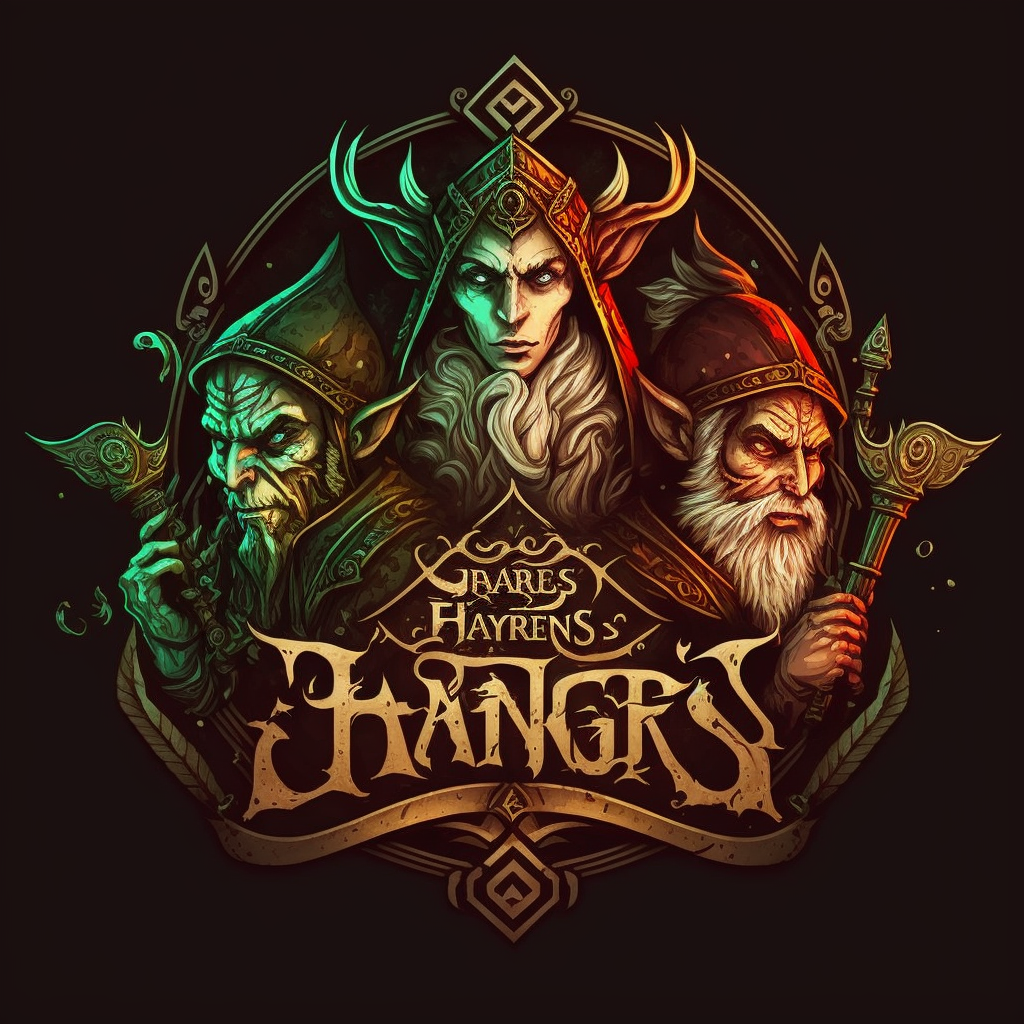The Emperor and it's Primarchs and Forces
Published on: July 18, 2025
Introduction into the Warhammer 40k Universe
In the 41st Millennium, the Emperor of Mankind has ruled from the Golden Throne of Earth
for over a hundred centuries. He commands humanity by divine will, governing a million worlds with his vast armies.
Despite being a decaying figure, imbued with power from the Dark Age of Technology, he serves as the Carrion Lord of the
vast Imperium of Man, where a thousand souls are sacrificed daily to prevent his true demise. Even in his undying state,
the Emperor remains vigilant. Mighty fleets traverse the perilous Warp, guided by the Astronomican – the psychic manifestation
of his will. Armies engage in battles across countless worlds, led by various forces, including the Adeptus Astartes,
the bio-engineered super-warriors known as Space Marines, alongside the Imperial Guard, planetary defense forces, the Inquisition,
and the Tech-priests of the Adeptus Mechanicus.
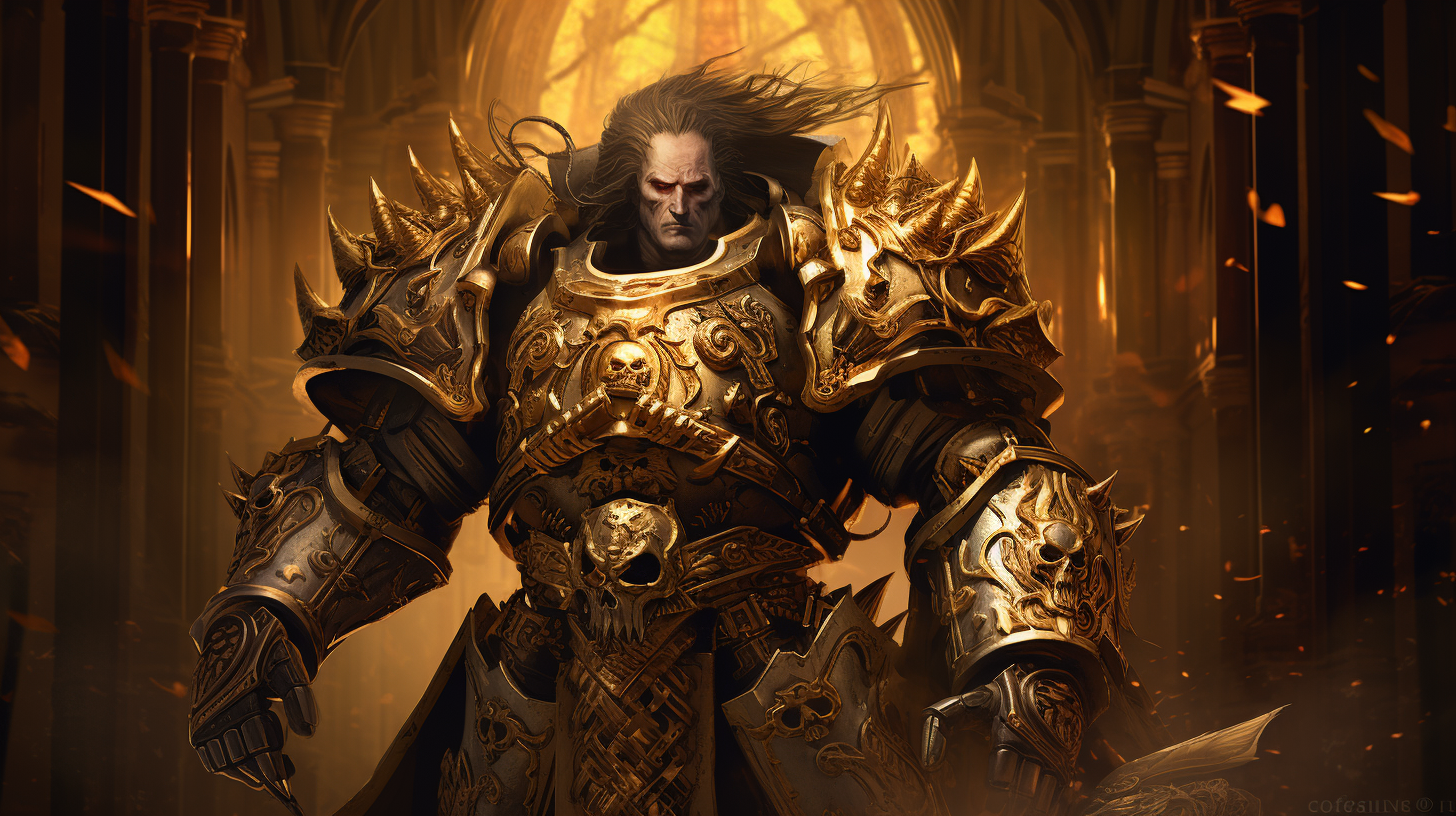
Despite their vast numbers, these forces struggle to fend off threats from aliens, heretics, mutants,
and more in a grim and brutal reality. To exist as a human in these times means being one among billions, enduring the
harshest and bloodiest regime. This is an era where the power of technology and science has been forgotten, progress and
understanding are distant memories, and the grim dark future is dominated by unending war. There is no peace among the stars,
only a ceaseless cycle of carnage, slaughter, and the ominous laughter of thirsting gods.
The Imperium, a sprawling stellar empire in the 41st Millennium, is the ultimate authority for most Humans
in the Milky Way Galaxy. Ruled by the god-like Emperor of Mankind, it faces challenges from various humanoid species,
including mutant offshoots known as Abhumans. Despite the Emperor's nominal rule, His severely damaged body confines Him to
the cybernetic life support of the Golden Throne. In this war-torn empire, teetering on collapse for 10,000 Terran years,
countless souls are sacrificed daily to sustain the Emperor's psychic strength. Amidst a galaxy where Daemons, mutations,
and death are constant, survival is a grim reality for billions. The Imperium spans millions of stars, defending Humanity
through wars and sacrifices, preventing its extinction by enemies and the Dark Gods' laughter.
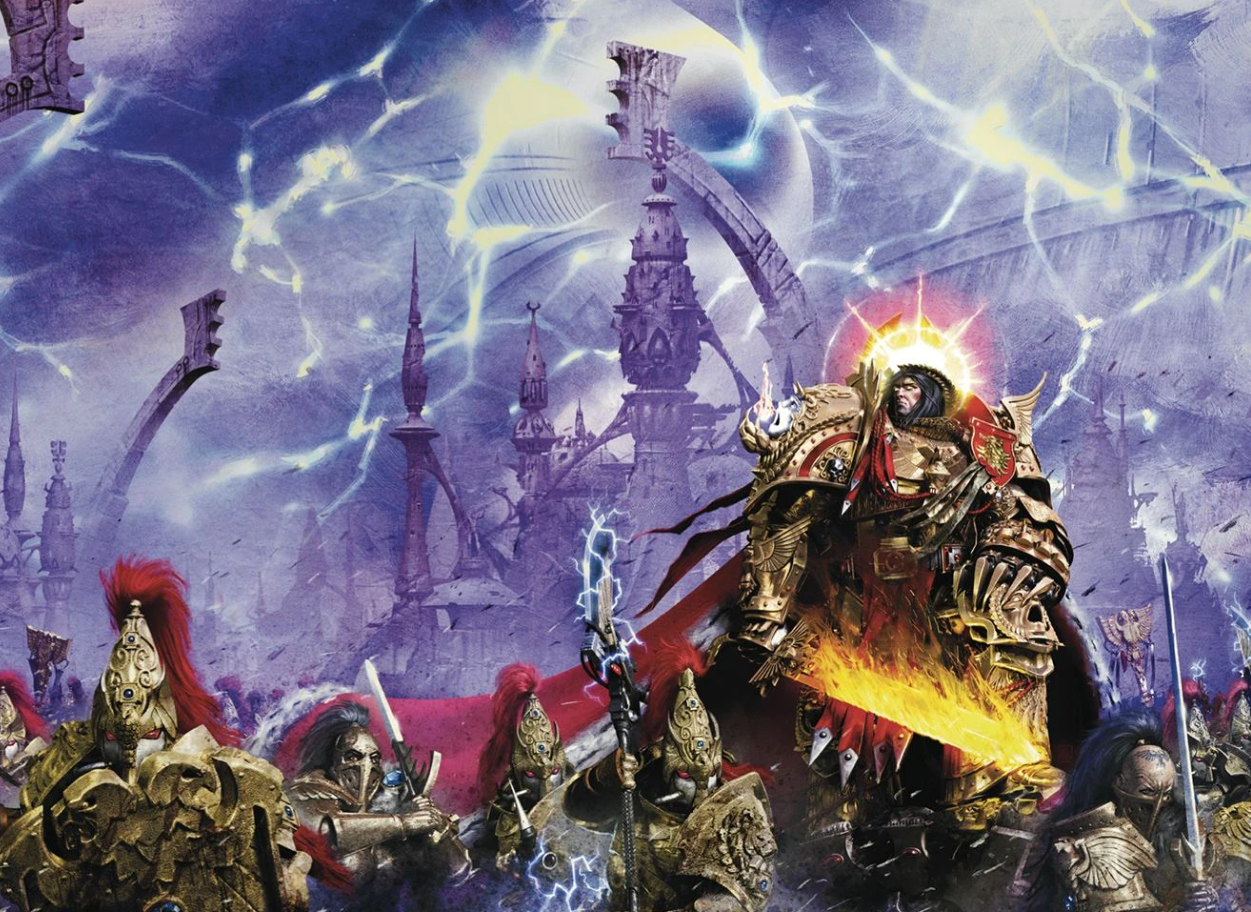
As the largest political entity with over a million Human-settled worlds, the Imperium enforces interstellar tribute,
supporting self-governance while demanding loyalty to the Emperor and the Imperial Cult. The Imperial Tithe, paid in troops and materiel,
ensures the Astra Militarum and Navis Imperialis can protect the Imperium. Promoting a neo-feudal political system, the Imperium
rejects democracy and change, deeming them heretical. Stifled by the need for stability, the Imperium faces threats from alien species,
Chaos, and internal challenges like rebellion and mutation. Despite its authoritarian nature, the Imperium's protection is crucial,
preventing Mankind's extinction from countless perils that lurk within and beyond its borders.
The Astra Militarum, colloquially known as the Imperial Guard, stands as the galaxy's largest fighting force,
serving as the primary military arm of the Imperium of Man. This colossal force, consisting of countless billions across diverse
regiments, operates a vast array of armored vehicles, making it the first line of defense against threats imperiling Humanity in
the 41st Millennium. Employed to respond swiftly when a world's Planetary Defence Force falters, the Astra Militarum employs
overwhelming numbers, supported by powerful artillery and main battle tanks. Nicknamed the "Hammer of the Emperor," their sheer
force contrasts with the precision of the Adeptus Astartes, described as the "Scalpel of the Emperor." The Astra Militarum's
origins trace back to the Great Crusade, where the need for more manpower led to the creation of the Imperial Army, later
renamed the Astra Militarum. Initially utilized for garrison duties, it eventually fought alongside the Space Marine Legions.
However, the Horus Heresy prompted a reorganization, resulting in the Imperial Army's dissolution and the birth of the Astra Militarum.
Now organized into planetary-sized Militarum Regimentos, the Astra Militarum operates independently of the Imperial Navy,
preventing large-scale rebellions. The lessons learned from the Horus Heresy shape the Astra Militarum's structure, ensuring loyalty,
discipline, and a safeguard against treachery. This force, the Hammer of the Emperor, remains a formidable bulwark defending
Humanity in the grim and turbulent 41st Millennium.
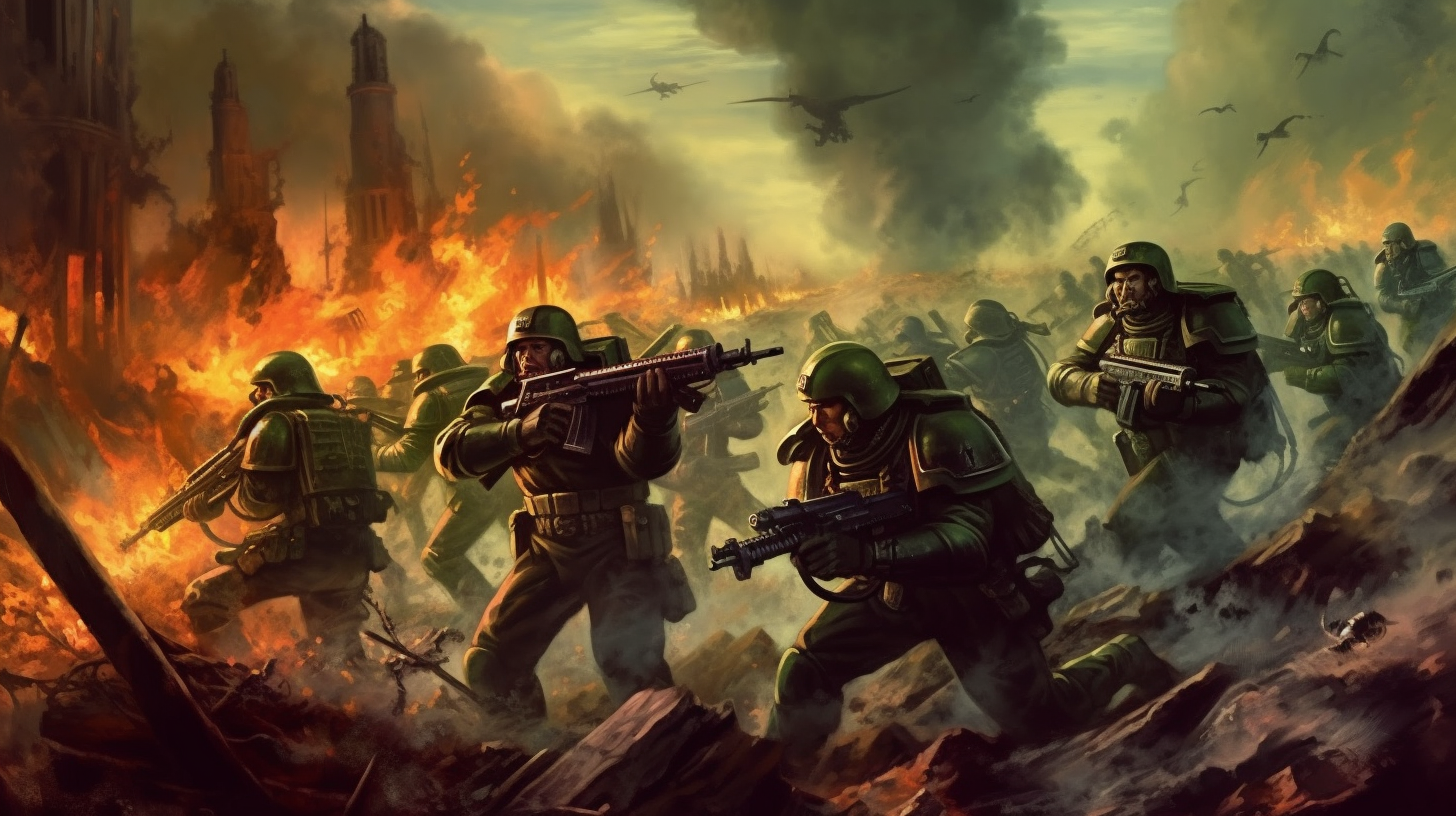
The Inquisition, officially known as the Holy Orders of the Emperor's Inquisition, operates clandestinely
outside the standard administrative structure of the Imperium of Man. Serving as the secret police force, it diligently pursues
threats to the stability of the God-Emperor's realm. This includes combating corruption by Chaos forces, heretics, mutants, rebels,
and relentless assaults from vicious alien species like Tyranids, Orks, and Drukhari. The Inquisition's notorious sigil originated
from the personal heraldry of Malcador the Sigillite, the Regent of Terra during the Great Crusade and Horus Heresy, and the Imperium's
second most powerful psyker after the Emperor Himself. At the onset of the Heresy, Malcador created the secret organization,
following the Emperor's orders to assemble individuals with an "inquisitive nature" to identify and eliminate Imperium threats.
Structured into three major orders, or "Ordos Majoris," along with numerous minor ones, or "Ordos Minoris," the Inquisition addresses
specific threats to the Imperium and Humanity's survival. The Ordo Malleus, alongside their Space Marine allies, the Grey Knights,
confronts and defeats Chaos forces and other extradimensional threats. The Ordo Xenos, supported by the Deathwatch Astartes,
defends against alien threats beyond Imperial borders. The Ordo Hereticus, accompanied by the Adepta Sororitas' Orders Militant,
combats internal Human threats within the Imperium's organizations and worlds. The Inquisition remains a vigilant guardian,
operating in the shadows to protect the Imperium from both internal and external dangers.
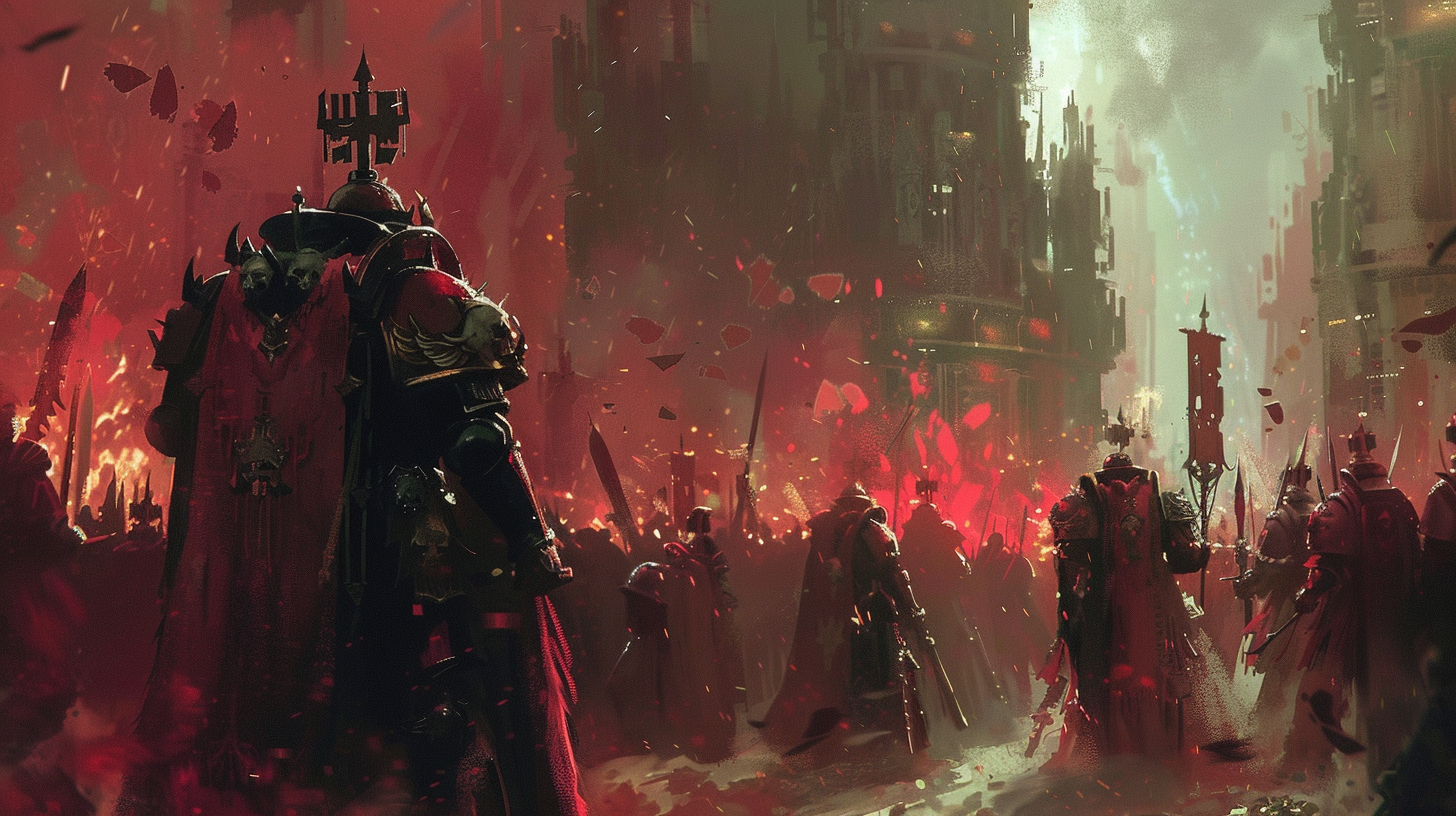
The Space Marines, also known as the Adeptus Astartes, stand as the pinnacle defenders of Humanity,
elevated beyond ordinary men through a rigorous regimen of genetic modification, psycho-conditioning, and intense training.
These superhuman warriors are virtually immune to disease, capable of enduring wounds that would be fatal to others, and clad
in powerful ancient armor while wielding unparalleled weaponry. Devoted to the Emperor and the Imperium, they are the Angels of Death,
instilled with an unwavering resolve. Physically stronger, more resilient, and often mentally detached from ordinary humans,
the Space Marines command both awe and fear. Some view them as demigods or angels, while others see them as efficient eradicators
of the Imperium's enemies. Certain Chapters disdain normal humans, perceiving them as frail beings prone to weakness and temptation.
Despite this, some Space Marines remember their purpose: to defend Humanity, even from itself. They are the last resort saviors,
guardians created not to lead but to protect. While some dismiss compassion as a human weakness, others recognize it as their ultimate salvation.
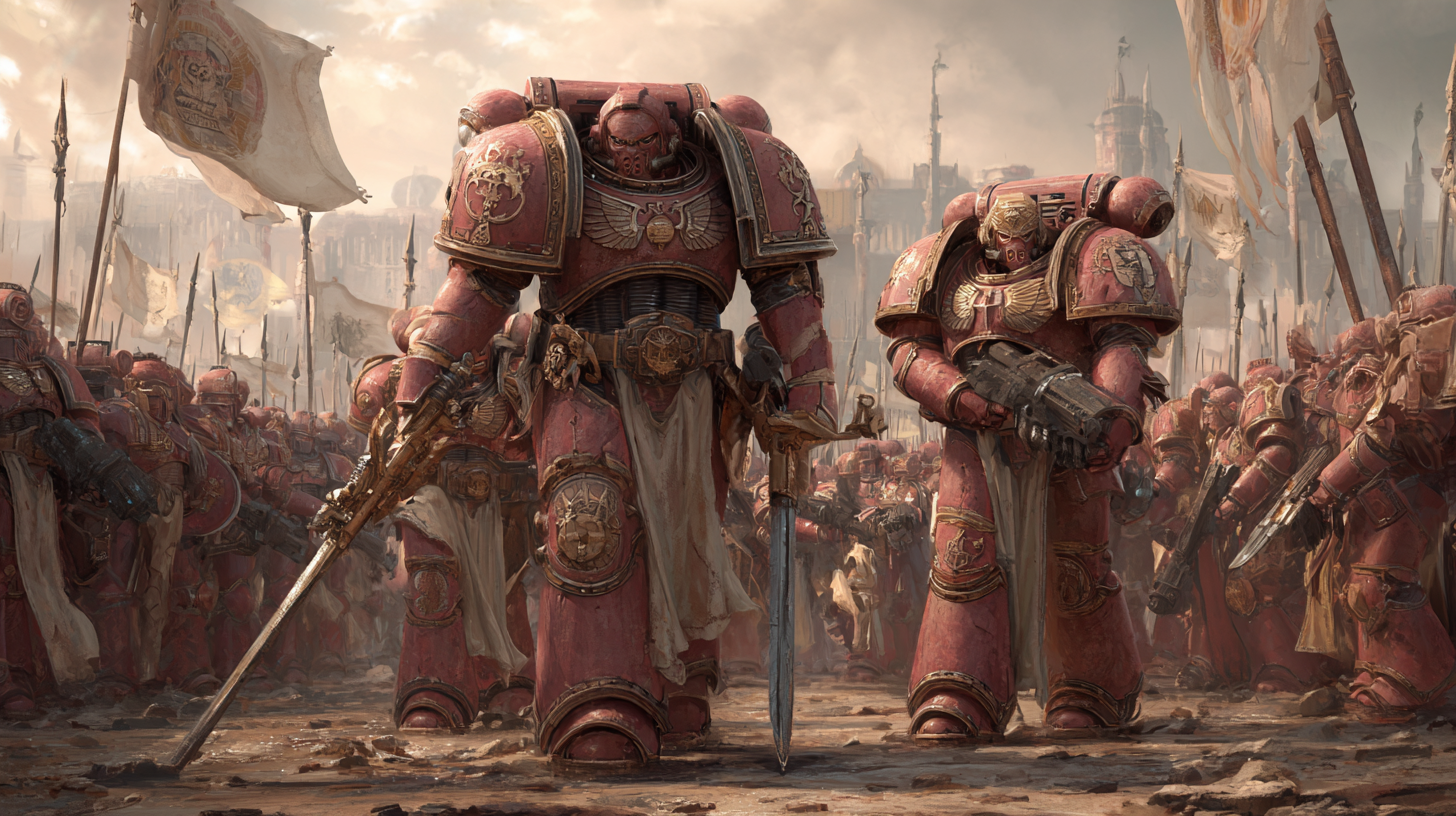
Recruitment methods vary, ranging from selecting neophytes from feral tribes to grooming volunteers from birth or even
kidnapping potential warriors. Regardless of the method, only those who endure the grueling initiation trials prove themselves
worthy of becoming a Space Marine. Once transformed into an Astartes, a Space Marine is forever set apart from the people he once
belonged to, sworn to protect them. With approximately 1,000 active Chapters at any given time, comprised of traditional Firstborn
and enhanced Primaris Space Marines, their genetic heritage mirrors that of the Emperor. The exact Astartes population remains uncertain,
fluctuating with time and Imperium circumstances since the Second Founding following the Horus Heresy.
The primarchs, 20 genetically-engineered transhuman "sons" of the emperor of mankind, emerged in the late 30th millennium.
Crafted to be immortal and superhuman generals, these exceptional beings were destined to lead the emperor's great crusade, uniting
the scattered human race under his rule. Their genomes served as templates for the 20 space marine legions. Bred to perfection as generals,
warriors, and statesmen, the primarchs surpassed normal humans in size, strength, speed, and intellect. Possessing charisma and martial
prowess akin to mythical gods, they were immune to disease, aging, and the failings of lesser men. Each embodied a unique aspect of war,
whether as the greatest strategist, the terror of war, a master of psychic powers, or the foremost practitioner of fortification.
These extraordinary beings were the emperor's means of reclaiming lost worlds and establishing his new imperium. intended to be the
best military commanders and political leaders in human history, the primarchs were to spread the imperial truth across the galaxy in
their father's name. However, the chaos gods thwarted the emperor's plans, spiriting the primarchs away through the warp to different
human-settled planets. Deprived of the emperor's guidance, each primarch developed a personality shaped by the circumstances of their
homeworlds, marked by unique strengths and challenges. Despite their exceptional gifts, the primarchs remained men, and their inherent
flaws eventually became the primary obstacle to realizing the emperor's grand vision for mankind.
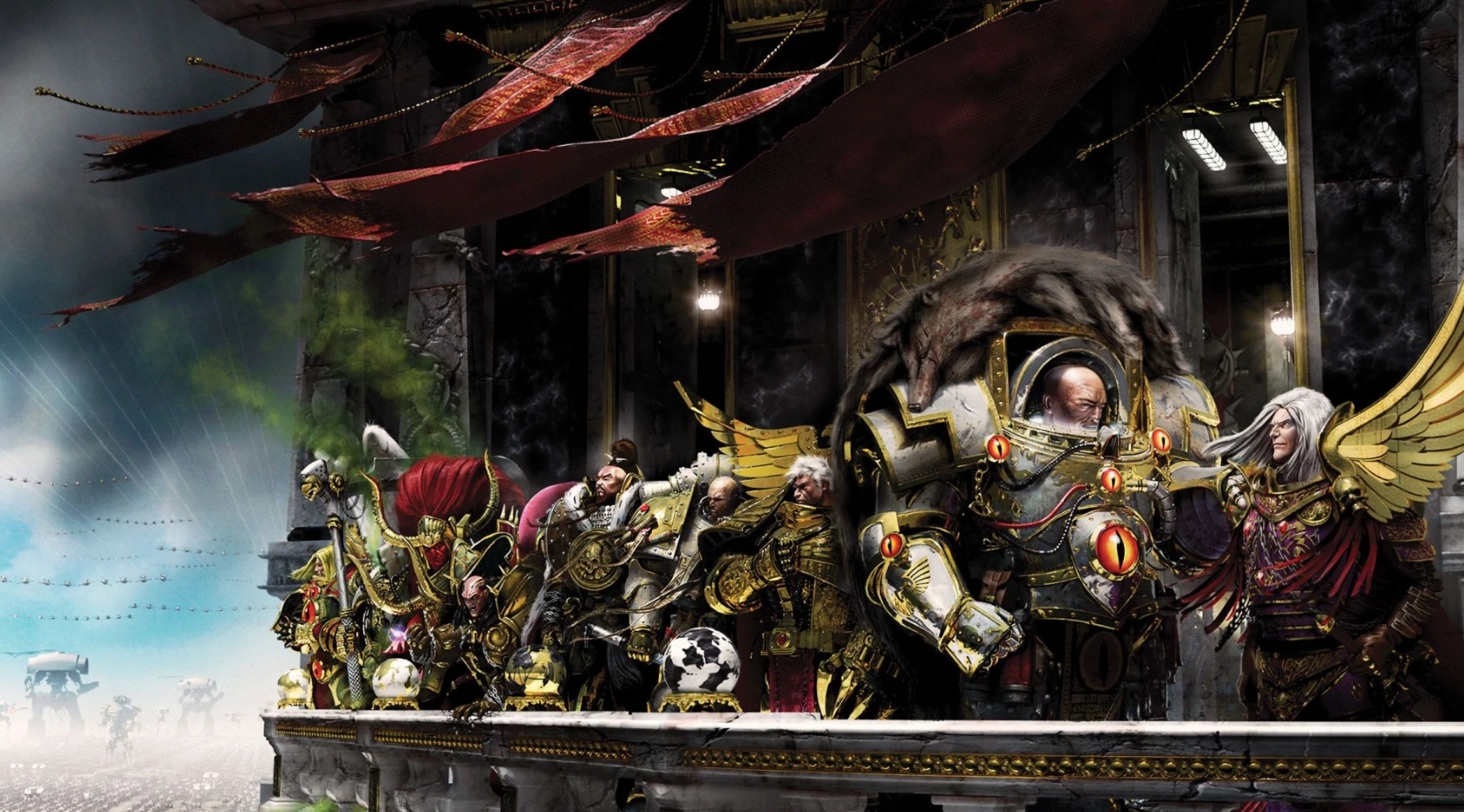
The Adeptus Mechanicus, officially recognized as the Cult Mechanicus or Cult of the Machine within the Adeptus Terra,
originates from Mars and serves as the source of scientists, engineers, and technicians for the Imperium. The tech-adepts, primary keepers of
sacred wisdom, form an exclusive caste of Tech-priests who safeguard the knowledge crucial for maintaining and constructing advanced Imperial
technology. Formerly known as the Mechanicum in ancient times, the Adeptus Mechanicus was distinctively separated from the larger
Mechanicum of Mars after the Horus Heresy, following the planet's fall to the Dark Mechanicum. This separation occurred under the order
of the Council of Terra in 012.M31. While acknowledging the Emperor's rule, the Mechanicus doesn't adhere to the Imperial Creed or Ecclesiarchy,
maintaining unique political and religious autonomy within the Imperium, as per the Treaty of Mars. The Mechanicus operates as an
empire-within-an-empire, with interests that often align with the wider Imperium.
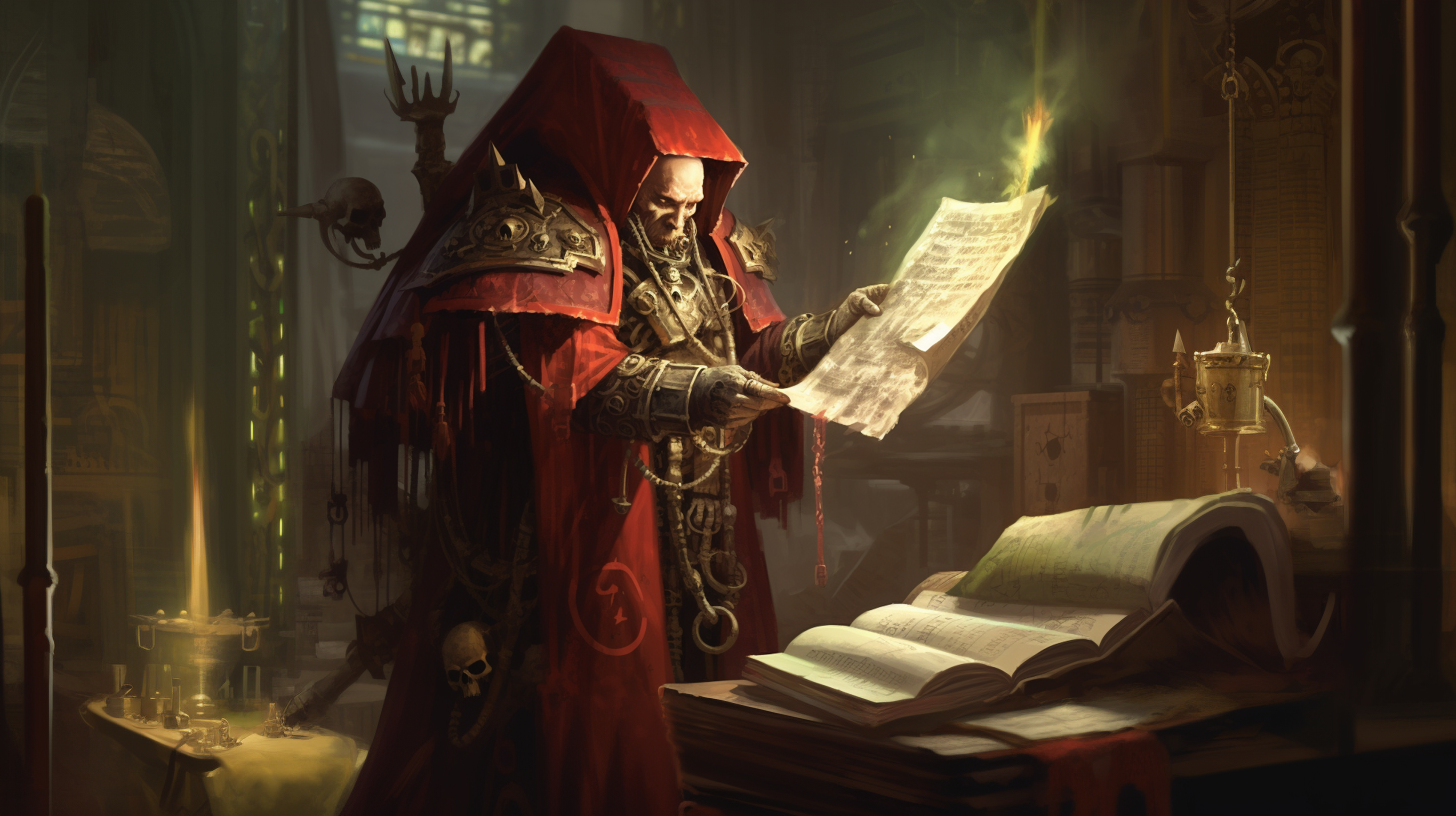
In place of the Imperial Creed, the Mechanicus follows its own enigmatic scriptures and worships the Machine God or "Omnissiah."
They consider knowledge as the true manifestation of divinity, revering creatures and artifacts embodying knowledge. The Emperor,
recognized as the living avatar of the Omnissiah, is the supreme object of worship. The Adeptus Mechanicus holds the belief that organic flesh
is weak, promoting the replacement of biological tissue with mechanical, bionic parts as sacred. Elder Tech-priests often become more machine
than man over time. Situated on Mars, the first Forge World of the Imperium, the Adeptus Mechanicus governs the Red Planet. Providing technical
and scientific expertise, they field formidable armies, including Titans, Questor Mechanicus Knights, Electro-priests, Skitarii, and Combat Servitors.
The Mechanicus remains a powerful force within the Imperium, contributing significantly to its technological and scientific prowess.
Imperial knights, also known as questor imperialis, are formidable robotic combat walkers in the service of the imperium
and occasionally the adeptus mechanicus. Piloted by single human warriors hailing from ancient feudal aristocratic cultures across the galaxy,
knights are smaller and less potent in combat than the smallest class of true titans utilized by the collegia titanica, such as the warhound-class
scout titan. These colossal war machines, standing 30 to 40 terran feet tall, boast nearly impenetrable ion shields and wield a devastating array
of heavy weapons. propelled by powerful servos, they have the capability to kick over tanks and crush soldiers. imperial knights, towering over
the battlefield, are revered relics from a bygone era, and bonding with them is an honor reserved for nobles from ancestral knightly houses.
The ritual of becoming, a strange and terrible rite, involves fusing the noble's mind with the knight's machine spirit, creating a union of flesh and metal.
Only then can the noble truly command the towering knight from the throne mechanicum.
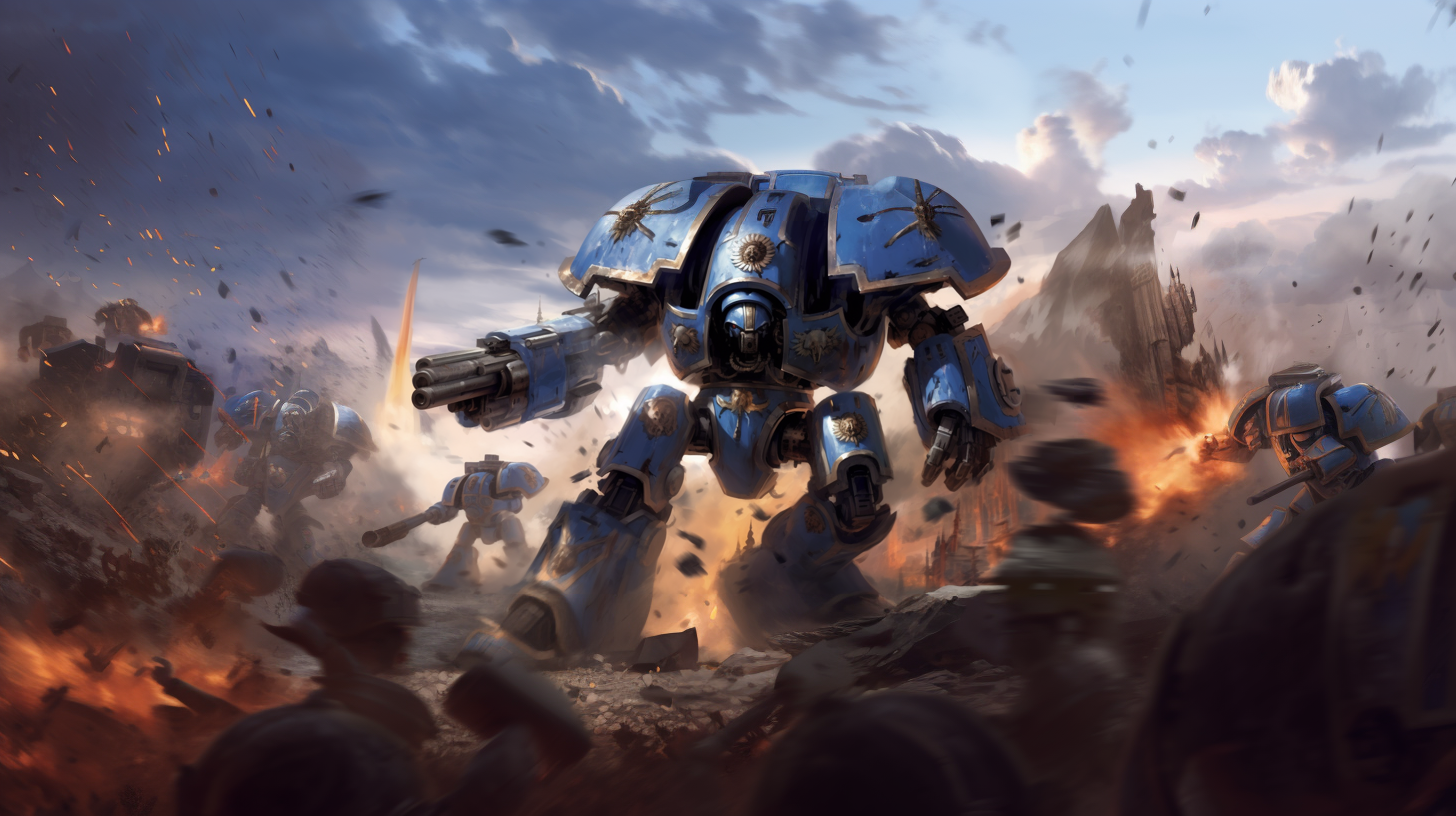
Thousands of standard years before the rise of the imperium, knights protected settlers on far-flung worlds. descendants of the first
human settlers, these nobles, or scions, guard imperial citizens, their bloodlines traced back to terra. Pilots of these massive war suits form noble
houses, sworn to defend their homeworlds and bound by oaths of fealty to the golden throne and the adeptus mechanicus. Knight armour comes in various
forms, with the knight paladin and knight errant being the most common. Both types are known for their balanced combination of manoeuvrability,
protection, and firepower. All imperial knights are encased in thick adamantium armour and equipped with powerful weapon systems, including primary
weapons on each arm and secondary systems on the body and shoulders. The knight's hand-forged armour, adorned with complex heraldry, varies based on
the artisan's skill. Ion shields provide potent defensive capabilities, deflecting and slowing enemy shots. The positioning of the shield depends on
the operator's skill. Imperial knights, armed with enormous melee weapons like reaper chainswords, showcase impressive close combat skills.
They also carry ranged weapons for blasting apart enemy vehicles and heavy stubbers for infantry targets. Other rarer types, such as crusader, castellan,
and lancer, offer increased firepower, thicker armour, or enhanced agility for specific roles, but the paladin and errant remain supreme examples of
knight design with their perfectly balanced attributes.




